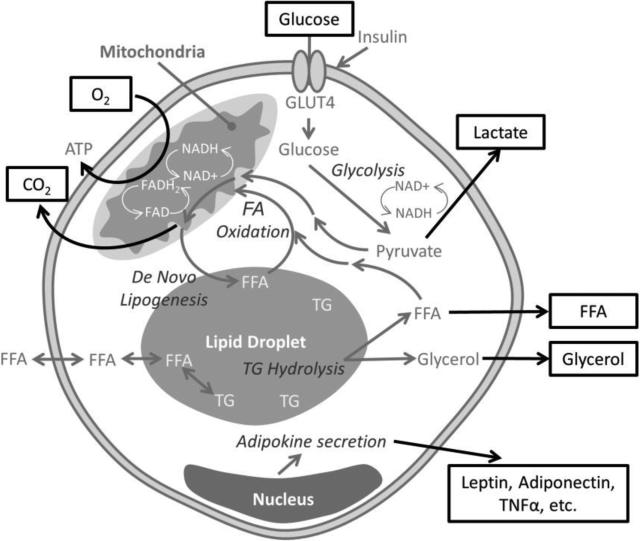Figure 1.
Schematic representation of an adipocyte's metabolism, where factors that can be evaluated non-invasively are outlined. In response to insulin stimulation, adipocytes translocate glucose transporter type 4 (GLUT4) to the plasma membrane, resulting in glucose uptake. Therefore, extracellular changes in glucose levels can be monitored. Once glucose is taken up in the cell, it is metabolized to the final end products of: lipids, lactate (released from the cell) or carbon dioxide (CO2, released from the cell). Triglycerides (TG), are stored in lipid droplets (which can be visualized by microscopes) as an energy resource, from two routes: synthesis of fatty acids from non-lipid substrates (de novo lipogenesis) or uptake of free fatty acids. In times of fasting, triglycerides are hydrolyzed (lipolysis) into glycerol and free fatty acids (FFA). Fatty acids (FA) can be secreted, oxidized in the mitochondria resulting in CO2 as an end-product, or enter the nucleus. Glycerol is secreted. Throughout all of these metabolic cycles, different adipokines are expressed, resulting in secretion of proteins that can be monitored.

